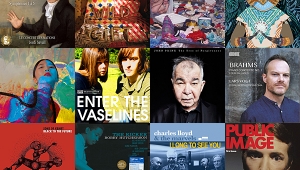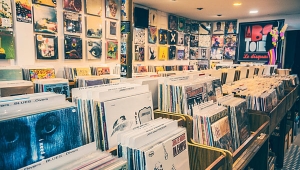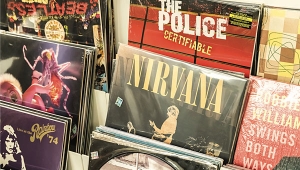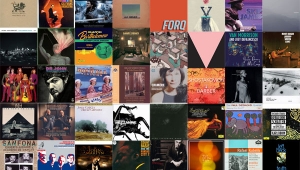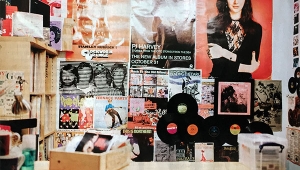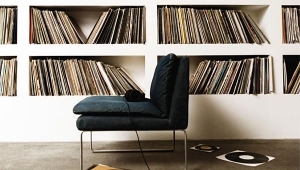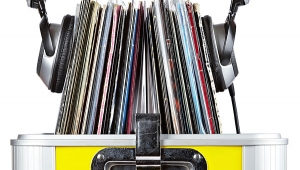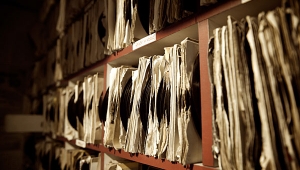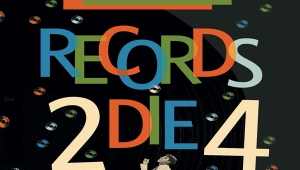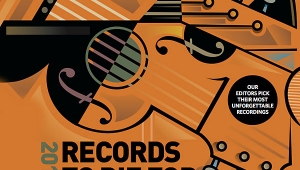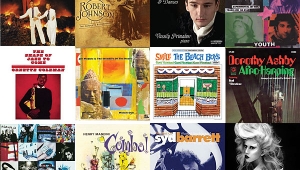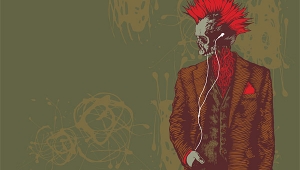| Columns Retired Columns & Blogs |
1995 Records To Die For Page 2
Paul L. Althouse
BRAHMS: Choral Songs, Opp.17, 42, 63, 93a, &104
Edwin Ortner, Arnold Schoenberg Choir
Teldec 92058-2 (CD only). Wolfgang Mohr, exec. prod.; Roland Streiner, rec. prod.; Franz Honegger, eng. DDD. TT: 65:20
We tend to know Brahms from his larger works: four symphonies, four concertos, the Requiem, some overtures. But unless you know some of these pieces, you can't really know his full range. Here's the place to start! The Arnold Schoenberg Choir, numbering about 45, sounds rich and warm (not at all British), and responds beautifully to Ortner's generous rubato and rise-and-fall phrasing. Many of these pieces are drop-dead gorgeous---I can't urge you enough to listen to them. I've never heard them done better. The recording, made in Vienna's Zögernitz Casino, has a wonderful small-hall acoustic---slightly reverberant, but never at the expense of clear diction.
BRAHMS: Piano Concerto 2
SCHUMANN: Introduction and Allegro appassionato, Op.92
Jenö Jandó, piano; Alexander Rahbari, BRT Philharmonic Orchestra, Brussels
Naxos 8.550506 (CD only). André Laporte, prod.; Jo Tavernier, eng. DDD. TT: 61:44
This disc is a sleeper. With Gilels/Jochum and Serkin/Szell on the market, who needs big-time Brahms with a relatively unknown Hungarian pianist, accompanied by a Belgian orchestra, and conducted by an Iranian?
Larry Archibald
LEROY ANDERSON: Fiddle-Faddle
Arthur Fiedler, The Boston Pops
RCA Living Stereo LSC-2638 (LP). Peter Dellheim, prod.; Anthony Salvatore, eng. AAA. TT: 34:56
For a "serious" classical-music recommendation, you'd be better off looking elsewhere in this vicinity. You could choose the James Judd Mahler First (Harmonia Mundi USA 907118) or the Nathaniel Rosen Bach Cello Suites (John Marks JMR 6/7), both of which were given richly deserved "Recording of the Month" recommendations in these pages, and both of which simply must be heard by anyone with even remote interest in their respective musical styles.
MARVIN GAYE: Midnight Love
CBS CK 38197 (CD). Marvin Gaye, prod.; Larkin Arnold, exec. prod.; Mike Butcher, eng. AAD? TT: 39:38
Who are the great male soul voices of all time? I nominate Nat King Cole, Sam Cook, and Marvin Gaye---any one of whom could croon you to the melting point. This "Record To Die Dancing From," though, captures Marvin in his most incendiary mood. The recorded sound is raw, with an overemphasized, shrieky presence region and an extraordinary, violent, synth-generated low end.
John Atkinson
This year, choosing just two R2D4s was an almost impossible task---a day before deadline, I'd narrowed the list down to a mere 10! With regret, I had to pass by Turnipseed Music's superbly natural-sounding Live at the Columns recording of the Tony Dagradi Trio (TMCD.07)---I love the music, but just don't know enough about jazz to be able to state for the record that it's a performance "to die for."
MAHLER: Symphony 1, "Blumine"
James Judd, Florida Philharmonic
Harmonia Mundi 907118 (CD only). Robina Young, exec. prod.; Paul F. Witt, prod.; Peter McGrath, eng.; Jerry Bruck, assoc. eng. DDD. TT: 66:14
Engineer McGrath recorded this disc in September 1993 at Ft. Lauderdale's Broward Center for the Performing Arts using a Schoeps KFM-6U "Sphere" stereo microphone for the main pickup and a pair of outrigger cardioids mixed in at a lower level to feed his four-track Nagra D open-reel digital recorder.
STRAVINSKY: Apollon Musagète
TIPPETT: Concerto for Double String Orchestra
William Boughton, English String Orchestra
Nimbus NI 5097 (CD only). DDD. TT: 53:11
Recorded in June 1987 in the Great Hall of Birmingham University---where EMI made the classic Louis Fremaux "Studio Two" recordings in the early '70s---this pairing of two classics for string orchestra is part of the continuing series from Boughton and his ex-BBC band. The sound is richly ambient, yet without the "bathroomy" character of Nimbus's piano recordings. The Ambisonic surround-encoding doesn't produce any odd effects in stereo playback, the soundstage being deeply detailed, though headphones do reveal a pulling to one side.
BRAHMS: Choral Songs, Opp.17, 42, 63, 93a, &104
Edwin Ortner, Arnold Schoenberg Choir
Teldec 92058-2 (CD only). Wolfgang Mohr, exec. prod.; Roland Streiner, rec. prod.; Franz Honegger, eng. DDD. TT: 65:20
We tend to know Brahms from his larger works: four symphonies, four concertos, the Requiem, some overtures. But unless you know some of these pieces, you can't really know his full range. Here's the place to start! The Arnold Schoenberg Choir, numbering about 45, sounds rich and warm (not at all British), and responds beautifully to Ortner's generous rubato and rise-and-fall phrasing. Many of these pieces are drop-dead gorgeous---I can't urge you enough to listen to them. I've never heard them done better. The recording, made in Vienna's Zögernitz Casino, has a wonderful small-hall acoustic---slightly reverberant, but never at the expense of clear diction.
BRAHMS: Piano Concerto 2
SCHUMANN: Introduction and Allegro appassionato, Op.92
Jenö Jandó, piano; Alexander Rahbari, BRT Philharmonic Orchestra, Brussels
Naxos 8.550506 (CD only). André Laporte, prod.; Jo Tavernier, eng. DDD. TT: 61:44
This disc is a sleeper. With Gilels/Jochum and Serkin/Szell on the market, who needs big-time Brahms with a relatively unknown Hungarian pianist, accompanied by a Belgian orchestra, and conducted by an Iranian?
Actually, Rahbari has proven himself a fine Brahms conductor (of the ardent, Romantic school), and his BRT orchestra, horn aside, sounds splendid. Jandó has all the necessary technique, and surges through the piece in long paragraphs with quick tempos (rather like Serkin without the sinewy sound). The seldom-heard Schumann makes an agreeable filler. Sonics are terrific: piano/orchestra balance is just right, the former having realistic "bite." At Naxos's budget price, this can't be beat! ![]()
Larry Archibald
LEROY ANDERSON: Fiddle-Faddle
Arthur Fiedler, The Boston Pops
RCA Living Stereo LSC-2638 (LP). Peter Dellheim, prod.; Anthony Salvatore, eng. AAA. TT: 34:56
For a "serious" classical-music recommendation, you'd be better off looking elsewhere in this vicinity. You could choose the James Judd Mahler First (Harmonia Mundi USA 907118) or the Nathaniel Rosen Bach Cello Suites (John Marks JMR 6/7), both of which were given richly deserved "Recording of the Month" recommendations in these pages, and both of which simply must be heard by anyone with even remote interest in their respective musical styles.
But my first nod of morbidity goes to another hunk of black plastic---this time a Shaded Dog. I've only heard a handful of Shaded Dogs, so am certainly unqualified to talk about them in any overall sense; but this one has the best recorded quality of any I've heard. It's open, spacious, and uncolored---good enough to pull guests from my dining-room table and straight into the living room.
This LP is available strictly at garage sales and used-record stores, but you shouldn't have to pay hundreds of dollars for it (my copy cost $1). As far as I know, it's not available on CD. It should be.
Around my house, we refer to this record as "Plink, Plank, Plunk!"---the title of one of the Leroy Anderson sillinesses featured. The playing is highly energized, and the music---well, it's non-serious. This record has only delight to recommend it.
MARVIN GAYE: Midnight Love
CBS CK 38197 (CD). Marvin Gaye, prod.; Larkin Arnold, exec. prod.; Mike Butcher, eng. AAD? TT: 39:38
Who are the great male soul voices of all time? I nominate Nat King Cole, Sam Cook, and Marvin Gaye---any one of whom could croon you to the melting point. This "Record To Die Dancing From," though, captures Marvin in his most incendiary mood. The recorded sound is raw, with an overemphasized, shrieky presence region and an extraordinary, violent, synth-generated low end.
In the midst of this sonic mayhem comes the purest, most seductive moan/cry I've heard from a record: "Baaaaaaaby" ("Sexual Healing"). For turning a roomful of passive party-goers into a throbbing mob of frenzied dancers, "Sexual Healing" leads the pack. (My other favorites are the Pointer Sisters' "Jump" and "I'm So Excited," and Huey Lewis and the News's "The Power of Love.") The other tracks on this wonder record are just a cut below.
Given my description of the quality of the recording, does this album still fit the requirements for "R2D4"? Well, it is clean---and if you're worried about stuff like that, then you must not be dancing. Must be played extra-loud, but proceed with caution: your woofers and amps must be up to the challenge, or you'll have some smoke and flames.
John Atkinson
This year, choosing just two R2D4s was an almost impossible task---a day before deadline, I'd narrowed the list down to a mere 10! With regret, I had to pass by Turnipseed Music's superbly natural-sounding Live at the Columns recording of the Tony Dagradi Trio (TMCD.07)---I love the music, but just don't know enough about jazz to be able to state for the record that it's a performance "to die for."
Similar misgivings disqualified both Analogue Productions' offering of Jimmy Rogers' blues album, Blue Bird (APO 2001), and Rykodisc's Talking Timbuktu (VCRD 199401), the collaboration between Ry Cooder and West African musician Ali Farka Toure. And as much as I wanted to nominate In Memoriam (Vital VF002)---the live tribute to the late South African jazz composer Chris McGregor by his Brotherhood of Breath orchestra---for its astonishing sense of "being there," pure honesty to the live event is not enough. A recording is not just a document of an acoustic concert, but has itself to be a convincing original event.
Both of my final choices are superb examples of how to capture the sense of a classical orchestra playing in a real acoustic space, but can also stand on their own merits as pure recordings---the music communicating with the listener unfettered by any considerations of purism.
MAHLER: Symphony 1, "Blumine"
James Judd, Florida Philharmonic
Harmonia Mundi 907118 (CD only). Robina Young, exec. prod.; Paul F. Witt, prod.; Peter McGrath, eng.; Jerry Bruck, assoc. eng. DDD. TT: 66:14
Engineer McGrath recorded this disc in September 1993 at Ft. Lauderdale's Broward Center for the Performing Arts using a Schoeps KFM-6U "Sphere" stereo microphone for the main pickup and a pair of outrigger cardioids mixed in at a lower level to feed his four-track Nagra D open-reel digital recorder.
I believe that, although the original master tapes were encoded with 20-bit resolution, the 16-bit CD master was prepared without the use of any noise-shaping/redithering, to preserve that midband resolution. Yet the orchestral sound is still as good as I have heard from CD. Note that the lack of compression means that you have to take care not to play the opening too loud. If you set the level too high, your neighbors will appreciate the cymbal clashes and massive bass drum strokes at the start of the fourth movement almost as much as you will!
This performance was featured as Stereophile's "Recording of the Month" last September; I have little to add to Kevin Conklin's insightful review other than that James Judd is one of the leaders in the movement to play Mahler's music closer to how it would have been performed as the composer heard it, particularly regarding the use of portamento (slides) in the string parts. Judd is also almost uniquely authentic in his use of what sound like wooden-headed sticks for the timpani in the "Frère Jacques" movement. (The solo double-bass at the start of this movement is deliciously and unambiguously set back in the surrounding acoustic.) The result is a refreshing performance that ranks almost up there with the best---for me, the 1961 Bruno Walter---matched by a naturally balanced, unforced, yet dynamic sound. (XVII-9)
STRAVINSKY: Apollon Musagète
TIPPETT: Concerto for Double String Orchestra
William Boughton, English String Orchestra
Nimbus NI 5097 (CD only). DDD. TT: 53:11
Recorded in June 1987 in the Great Hall of Birmingham University---where EMI made the classic Louis Fremaux "Studio Two" recordings in the early '70s---this pairing of two classics for string orchestra is part of the continuing series from Boughton and his ex-BBC band. The sound is richly ambient, yet without the "bathroomy" character of Nimbus's piano recordings. The Ambisonic surround-encoding doesn't produce any odd effects in stereo playback, the soundstage being deeply detailed, though headphones do reveal a pulling to one side.
My reference LP performance of Stravinsky's delightful neoclassical ballet score was the 1968 Marriner/St. Martins recording (Argo ZRG 575). It has been effectively displaced by this new acquisition, which spent much time on the Mark Levinson No.31 last fall. The coupling, however, is the real strength: his Concerto for Double String Orchestra put Michael Tippett on the musical map in 1939. I was lucky enough to be able to hear the composer conduct it in concert several years ago, when I read in the program notes that the critics at the very first performance mocked the piece for its complete lack of tunes. Well, what do music critics know?
To listen to the Concerto is to bathe in a plethora of melody as Tippett, with nods to Sibelius and Stravinsky, weaves resonances from almost every age of English music-making into a richly frenetic score. Melodic fragments ignore bar lines and conventional ideas of key and meter, never falling to tonal ground but endlessly shifting past one another, sometimes merging, at others contrasting, to climax in the finale's glorious, great C-Major song. (XIII-4)
- Log in or register to post comments

